Understanding Dangerous Pet Birds: A Comprehensive Analysis
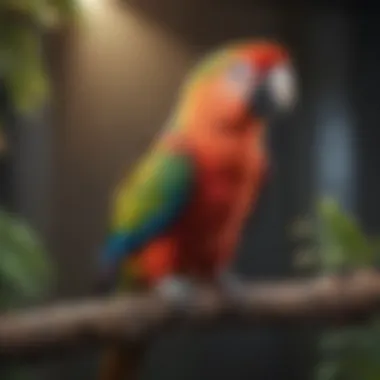

Intro
The discussion surrounding dangerous pet birds often evokes a mixture of fascination and concern. Birds, with their vibrant personalities and complex behaviors, can be delightful companions; however, some species have traits that can make them more unpredictable. This article endeavors to explore the myriad factors that contribute to the safe ownership of birds well-known for their potential risks. By delving into their behavioral intricacies, environmental influences, and the critical responsibilities of owners, we aim to present a clear framework for understanding these remarkable creatures.
Care Tips
In ensuring a safe environment for both the pet bird and its owner, proper care is fundamental. This section outlines key practices in daily routines, cage setup, and hygiene verification.
Daily Care Routines
Creating a consistent daily schedule for bird care is paramount. Birds thrive on routine; it gives them a sense of security. This routine typically includes feeding, social interaction, and playtime. Owners should:
- Feed fresh food daily including vegetables and grains.
- Change water twice a day to keep it clean and fresh.
- Engage in at least one hour of social interaction with the bird.
Cage Setup and Maintenance
An appropriate cage setup is essential. The size and features of the cage can greatly affect a bird’s safety and behavior. Here are factors to consider:
- Cage size: Larger cages offer better space for movement.
- Bar spacing: Ensure bars are correctly spaced to prevent escape or injury.
- Location: Place the cage in a safe area, away from drafts and harmful substances.
Regular cleaning routines should include:
- Removing uneaten food and droppings daily.
- Thorough cleaning of the cage weekly to prevent bacterial growth.
Hygiene and Cleaning Practices
Keeping a clean environment is crucial for the health of both birds and owners. Regular sanitation practices help diminish the chance of illness.
- Use mild soap and water for cleaning perches, toys, and other cage items.
- Avoid using harsh chemicals as they can be toxic to birds.
Seasonal Care Adjustments
Seasonal changes can impact a bird's health and behavior. During winter, ensure adequate heat; in summer, consider cooling measures. Pay attention to factors like humidity and daylight hours, adjusting the cage location and interaction routines accordingly.
Behavioral Insights
Understanding a bird's behavior is crucial in recognizing potential dangers. Many behaviors are innate, yet they can be affected by their environment and treatment.
Understanding Bird Body Language
Birds communicate extensively through body language. By observing them, owners can learn to interpret their moods and needs. Some signs to watch for include:
- Puffed up feathers: Indicates a bird is feeling cold or unwell.
- Biting or aggression: Often a sign of fear or territoriality.
Common Behavioral Issues and Solutions
Behavioral problems can arise due to a variety of factors. Common issues include excessive screeching, feather plucking, and aggression.
- Excessive screeching might indicate boredom or attention-seeking behavior.
- Feather plucking could suggest stress or poor nutrition. Solutions could involve enriching their environment with toys and interaction.
Positive Reinforcement Techniques
Employing positive reinforcement is effective in shaping behavior. Rewarding desirable behaviors encourages birds to repeat them. Use treats or affection to reinforce good habits.
Social Interaction Needs
Many birds are social creatures and need regular interaction. Neglecting social needs can result in behavioral challenges. Owners must engage in daily playtime and conversation, fostering a strong bond.
Nutrition Guides
Proper nutrition is vital to a bird's health and safety. Understanding dietary needs can often mean the difference between a thriving pet and one that faces health issues.
Essential Diet Components
Birds benefit from a balanced diet that includes the following:
- Seeds and nuts: Key components but should not be the only nutrition source.
- Fresh fruits and vegetables: Excellent for vitamins and minerals.
Safe and Toxic Foods
Awareness of both safe and toxic food items is critical. Safe options include:
- Apples, carrots, and spinach.
Conversely, certain foods like chocolate, avocado, and caffeine are harmful and should be avoided.
Supplements and Treats
Occasionally providing supplements can help maintain health, especially in species with specific nutritional gaps. Bird-safe treats can also be used during training.
Feeding Strategies for Different Species
Each bird species has unique dietary requirements. For instance, parrots often require more protein compared to finches. Researching individual species will aid owners significantly in crafting appropriate diets.
Wellness and Health
Birds require regular health checkups and attention to ensure their wellbeing.
Routine Health Checkups
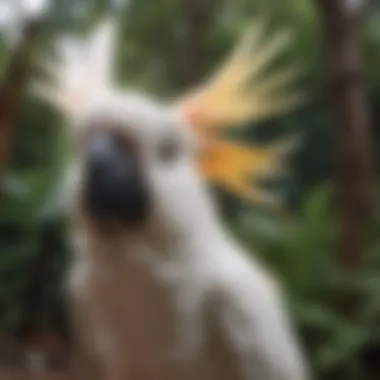
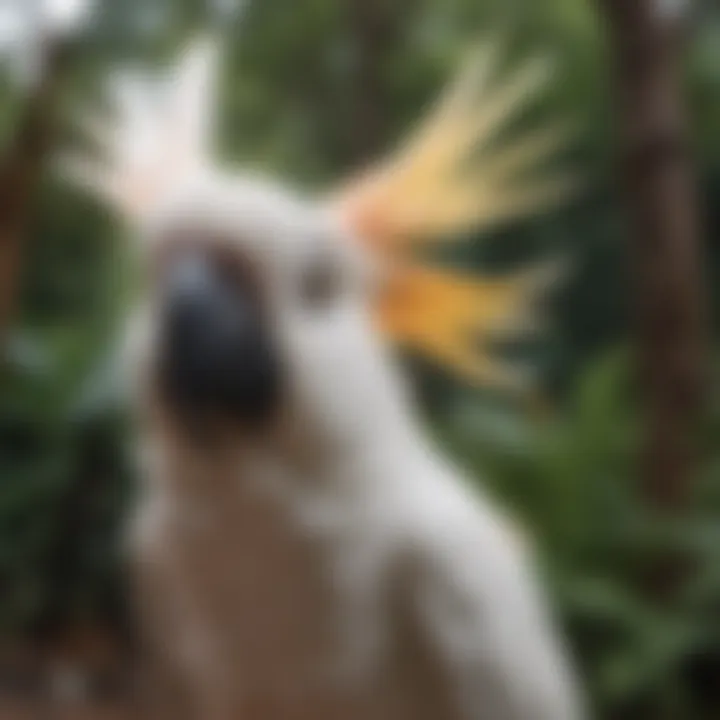
Regular veterinary visits are essential. These allow for preventive care and early detection of health issues.
Identifying Symptoms of Illness
Knowing the signs of illness is crucial. Some symptoms include:
- Lethargy
- Changes in eating habits
- Feather loss
Preventative Care and Vaccinations
Staying up-to-date on vaccinations can prevent many diseases common in birds. Discussing a vaccination schedule with a veterinarian is vital for safeguarding health.
Mental and Emotional Well-being
Birds require mental stimulation to remain healthy. A rich environment, filled with interaction, toy exploration, and even training, contributes significantly to their emotional health.
Enriching Activities
Engaging activities are essential for a bird's physical and mental requirements. Here are several enriching activities that promote well-being:
Toys and Playtime Ideas
Incorporating various toys can stimulate a bird’s mind.
- Foraging toys: Encourage natural foraging behavior.
- Chew toys: Good for beak health and boredom.
Training and Tricks
Training sessions can be both productive and enjoyable. These sessions enhance mental stimulation and facilitate bonding between owner and bird.
Outdoor Activities and Interaction
Supervised outdoor time is beneficial. Exposure to fresh air and natural sunlight can improve health. Always ensure safety with a secure harness or cage.
DIY Projects for Mental Stimulation
Creating DIY toys or puzzles can be a fun way for owners to enhance their birds’ environment without spending a lot. Using safe household items allows for creativity while engaging birds.
Understanding dangerous pet birds requires dedication and awareness from the owner. With the right knowledge and practices, potential risks associated with specific species can be effectively managed.
Foreword to Dangerous Pet Birds
The discourse surrounding dangerous pet birds is essential for both new owners and seasoned enthusiasts. Understanding the multifaceted nature of these avian companions can significantly impact the choice of species and the methods of care employed. Many birds, while often adored for their unique qualities, can exhibit unpredictable behaviors. This aspect can lead to challenges in their management and interaction with humans.
By delving into the topic of dangerous pet birds, readers gain an awareness of risks linked with certain species, providing a foundation for responsible ownership. This is not merely about highlighting risks; it emphasizes the importance of proactive measures in selecting and caring for these birds.
A thorough exploration of the behavioral traits, environmental influences, and the necessity of informed decisions serves to arm potential bird owners with the knowledge needed to create safe and enriching experiences. The consequences of underestimating a bird's behavioral tendencies can be severe, affecting both the owner and the bird's wellbeing.
Defining Dangerous Birds
Defining what constitutes a dangerous bird involves examining specific traits and behaviors that can lead to harm. Dangerous birds are often characterized by their potential for aggression, unpredictable reactions to stimuli, and, at times, territoriality. Birds that exhibit these tendencies may cause harm through biting, scratching, or other aggressive actions, especially when they feel threatened or uncomfortable.
It is also crucial to recognize that a bird's behavior can vary widely even within a species. Factors such as their upbringing, environmental changes, and overall health can influence how dangerous they may appear. For instance, a well-socialized Cockatoo may show less aggression than one that has had little human interaction. Understanding these nuances is key to appropriate management.
Why Some Birds Are Considered Dangerous
Several factors contribute to the perception of certain birds as dangerous. Firstly, their size plays a role; larger birds such as Macaws can inflict significant physical damage due to their strong beaks. This factor alone can position them as a concern for potential owners.
Behavioral predispositions also weigh heavily on this classification. Some bird species demonstrate heightened aggression, especially during mating seasons or in cases of limited space. For example, African Grey Parrots can become quite territorial, which may manifest as aggressive behavior toward perceived threats.
Furthermore, an understanding of fear responses is vital. Birds have instinctual reactions that can lead to sudden aggression, making fear a considerable driver in avian behavior. Ignorance of these behaviors and their triggers is one reason many misjudge how to care for these creatures.
In sum, recognizing why certain birds carry risks requires a blend of species-specific knowledge and an awareness of individual bird personalities. This approach not only aids in promoting safety but also enhances the bond between bird and owner, promoting a harmonious living environment.
Common Species of Dangerous Pet Birds
Understanding the common species of dangerous pet birds is essential for any current or prospective bird owner. Each bird species has unique traits and behaviors that influence their potential for danger. By examining these species, one gains insight into their care requirements, behavior patterns, and what makes them challenging as pets. This knowledge aids in making informed decisions before choosing a bird for companionship.
Cockatoos
Cockatoos are renowned for their striking appearance and playful nature. They possess strong beaks and can exhibit aggressive behaviors, particularly when they feel threatened or are not properly socialized. The key characteristics that may contribute to their dangerous reputation include:
- Strong Beaks: Cockatoos have powerful, curved beaks that can inflict serious wounds if they feel cornered or scared.
- Intense Affection Needs: These birds require substantial social interaction. If neglected or bored, they may become aggressive or destructive.
- Loud Vocalizations: Their natural calls can be disruptive and may lead to behavioral issues if not addressed early.
Their intelligence and need for stimulation mean they require active engagement from their owners to minimize aggression.
Macaws
Macaws are large, vibrant birds known for their inquisitive and social nature. Despite their beauty, they can pose a risk if proper care is not followed. The following elements are crucial:
- Size and Strength: Macaws are among the largest pet birds. Their strength can lead to significant injuries.
- Need for Space: These birds thrive in large environments due to their energetic behavior. A cramped space can trigger frustration and lead to aggressive displays.
- High Intelligence: Their problem-solving capabilities can lead to destructive behavior if they are not mentally stimulated.
Proper training and ample space are indispensable for ensuring safety and well-adjusted behavior.
African Grey Parrots
African Grey Parrots are famous for their cognitive abilities and vocal mimicry. However, they can become challenging if their emotional needs are not met:
- Vocal Mimicry: They can replicate sounds and words, which may be amusing but can also lead to frustration if the mimicry is not combined with social interaction.
- Strong Emotional Bonds: They form strong attachments to their owners and can become aggressive towards strangers or during moments of anxiety.
- Fearful Nature: Sudden changes or stressful environments can trigger fear responses, resulting in biting or other aggressive actions.


Providing a stable and enriched environment is crucial for their well-being and minimizing risks.
Conures
Conures are small to medium-sized birds known for their playful and affectionate demeanor. While they are often seen as gentle, some factors may lead them to display dangerous behavior:
- Playfulness Can Turn Aggressive: Their playful nature sometimes results in nipping, especially during playtime.
- Noise Levels: Some conures are loud, and excessive noise can lead to behavioral changes, including aggression.
- Social Requirements: If they do not receive enough attention, they can develop destructive habits and defensiveness.
Regular socialization and interactive play can mitigate these issues.
Amazon Parrots
Amazon Parrots are recognized for their playful personalities and striking colors. However, an underappreciated aspect of their behavior can make them potentially dangerous:
- Vocalizations and Behavior Changes: They can be loud and vocal, especially when not receiving enough attention. This can lead to aggressive expressions if ignored.
- Loyalty to Owners: They often form a strong bond with one person. If that bond is threatened, they might become aggressive towards others.
- Protective Nature: Their territorial instincts can lead to defensive behavior if they feel their space is invaded.
Understanding their social structure and providing adequate engagement can help manage risks.
Important Note: Always consider evaluating these species in the context of your lifestyle and resources. Not all birds will display aggression, but understanding these traits is crucial for safe ownership.
Assessing a bird’s personality and needs before adoption can greatly impact the quality of both the owner's and bird's life.
Behavioral Traits Linked to Danger
Understanding the behavioral traits linked to danger in pet birds is essential for both current and prospective owners. Recognizing these traits can help in managing risks and preventing incidents. Every bird species has unique instincts and behaviors influenced by genetics, social structures, and environmental surroundings. By being aware of these behavioral elements, owners can prepare themselves for a harmonious relationship, ultimately enhancing the safety of both the bird and its home.
Aggression Triggers
Aggression in pet birds can arise from various triggers. These triggers often stem from a bird’s instinctual behaviors or its environment. Understanding these aggression triggers is crucial for safe interactions.
- Fear-based Aggression: Birds may act aggressively when they feel threatened. Sudden movements or loud noises can lead to this response.
- Hormonal Changes: Seasonal changes can affect hormonal levels, leading to increased agitation and potential aggression.
- Resource Protection: Birds can exhibit territorial behaviors, especially concerning food, toys, or nesting areas.
- Social Hierarchy: In multi-bird households, competition for dominance can result in aggressive behaviors.
- Past Trauma: Birds with a history of abuse or neglect may display aggression due to trust issues.
Recognizing these triggers helps owners avoid them, to prevent aggressive situations from occurring.
Fear Responses in Birds
Fear responses in birds can manifest in different ways and impact not just the bird's behavior but also its well-being. These responses are survival mechanisms. Understanding and addressing fear is vital.
- Flight Response: A scared bird may try to fly away from perceived threats. This can lead to injuries, especially in a confined space.
- Freezing: Some birds may freeze when startled. This behavior can indicate high stress and fear.
- Vocalizations: Loud calls or screams are common when birds feel threatened. This serves as a warning to both predators and other birds.
To mitigate fear responses, it is essential for owners to create a comfortable and stable environment. Understanding what frightens a bird can lead to better, safer interactions.
Territorial Behavior
Territorial behavior is another critical aspect that can pose risks. Birds often establish territories to protect resources and social standing. This behavior is particularly pronounced in species such as Amazon parrots and cockatoos.
- Nest Defense: Birds are known for fiercely defending their nesting areas. Any perceived encroachment can lead to aggressive defense behavior.
- Space Regulation: In shared spaces, birds may display aggression toward others they see as invading their territory, even if it leads to altercations with other pets or humans.
- Mating Season: During breeding seasons, territoriality can worsen as hormones drive behaviors that protect potential mates and nests.
Effective management involves providing adequate space and resources for each bird, as well as ensuring that social interactions do not lead to disputes. Owners should always be observant of their birds and take action to defuse potentially hostile situations.
Understanding these behavioral traits effectively contributes to a safer and more enjoyable experience for both birds and their owners.
Environmental Factors Influencing Behavior
Understanding the environmental factors influencing behavior is crucial when discussing dangerous pet birds. Birds, like all animals, are heavily affected by their surroundings. A comprehensive analysis of these factors can help owners create safer and more harmonious living conditions for their avian companions. Environmental considerations encompass various elements which can directly affect a bird's behavior and reaction to stimuli. This section breaks down key areas to consider, enabling potential and current bird owners to make informed decisions.
Home Environment Design
The design of a bird's home environment can greatly influence its behavior. Space is one essential aspect. Adequate room allows birds to move freely and engage in natural activities such as flying and climbing. Overly cramped quarters can lead to stress, promoting aggressive or erratic behavior. Additionally, the layout of the cage itself—such as the placement of perches, toys, and feeding areas—affects a bird’s comfort and security.
Here are some factors to consider when designing a bird-friendly environment:
- Cage Size: Larger cages provide more space for movement.
- Perches and Toys: Varied perches and stimulating toys engage birds physically and mentally.
- Natural Elements: Including natural branches or plants can mimic a bird's natural habitat, reducing stress and promoting well-being.
When the environment caters to a bird's needs, there is a notable decrease in behavioral issues. A well-designed space fosters confidence and reduces anxiety, ingredients essential for harmonious pet ownership.
Social Interactions
Social interactions significantly shape a bird's behavior. Birds are naturally social creatures, requiring interaction not just with their species, but also with humans. Lack of adequate social engagement can lead to loneliness, frustration, and aggressive tendencies. It is essential for owners to understand the dynamics of socialization and how to foster healthy interactions.
Key points to emphasize include:
- Time Spent with Birds: Regular interaction with the owner is crucial for emotional support.
- Interacting with Other Birds: If compatible, allowing birds to interact with each other can fulfill their social needs. However, proper introductions are necessary to avoid territorial aggression.
- Behavioral Cues: Owners should be aware of their birds’ body language and vocalizations, adjust interactions accordingly, and promote positive social experiences.
Through attentive social interaction, owners can mitigate many behavioral issues that arise from isolation, thereby increasing the overall quality of life for their feathered friends.
Routine and Changes
Routine is a core element in a bird's daily life. Consistency in feeding, interaction, and habitat maintenance provides a sense of security. Birds thrive on predictable schedules. Disrupting this routine can lead to behavioral changes, often resulting in stress-related issues or aggression.
Consider these factors regarding routines:
- Daily Schedule: Stick to a feeding and interaction schedule; this predictability helps the bird feel secure.
- Observing Changes: Be mindful of changes in behavior when routines are altered. If a bird acts out, it may signal stress from an unexpected change.
- Introducing New Elements: Changes such as new toys or perches should be introduced gradually to avoid overwhelming the bird.
By maintaining a stable routine while being adaptable to change, owners can create a calming environment. Security promotes trust and reduces potential dangers related to stress-driven behaviors.
Important: Proper awareness of environmental factors such as design, social needs, and routines can empower bird owners to foster a nurturing environment that minimizes risk, ensuring both safety and happiness for their avian companions.
Safety Measures and Precautions
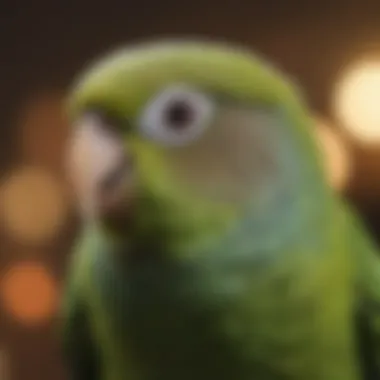
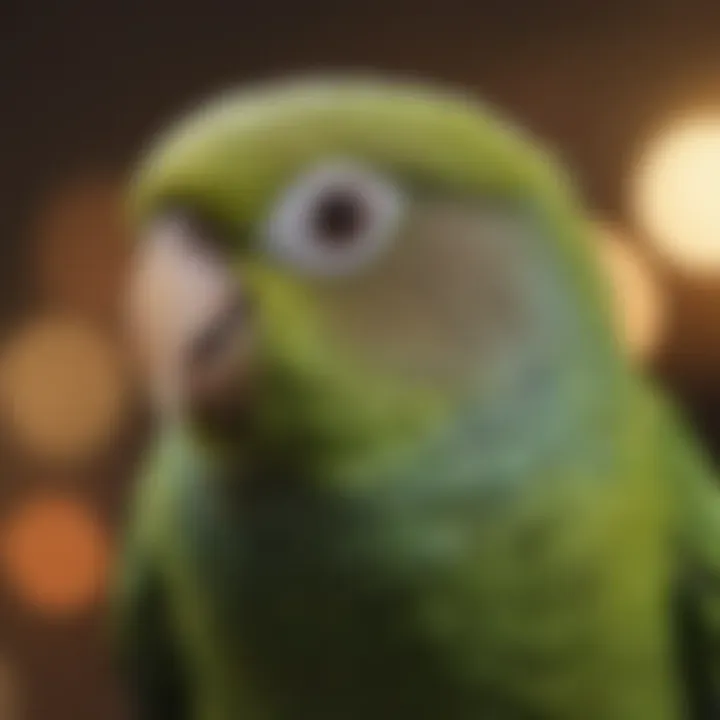
The significance of safety measures and precautions cannot be overstated in the context of keeping pet birds. By implementing effective strategies, bird owners can safeguard both their avian companions and the people around them. Such measures encompass various aspects of bird ownership, from selecting the appropriate species to creating a nurturing home environment. Recognizing and acting on these safety protocols not only enhances the well-being of birds but also fosters a secure atmosphere for both pets and owners.
Choosing the Right Bird
Selecting a bird species is a crucial first step for anyone considering a pet bird. The right choice reduces potential risks and helps to ensure a harmonious relationship between the bird and its owner. Some birds, such as cockatoos and macaws, are known for their intelligence and engaging personalities. However, their complex needs may require extensive commitment and experience from their owners.
When choosing a bird, consider the following factors:
- Size: Larger birds often have strong beaks and can cause significant injury if they feel threatened. Smaller birds may be less risky but can still exhibit unpredictable behaviors.
- Personality Traits: Research species’ typical characteristics. Certain birds exhibit more aggressive tendencies, particularly if they are not socialized properly.
- Lifespan: Birds like African Grey Parrots can live for several decades. Ensure you are prepared for a long-term commitment.
- Noise Level: Some species are louder than others. This can affect the comfort of the household and the relationship with neighbors.
Informed decisions lead to safer outcomes. Therefore, extensive research on species-specific behavior and care is essential.
Creating a Safe Space
The home environment plays a pivotal role in ensuring the safety of pet birds. Birds require a space that fosters well-being while minimizing risks. Design your bird's area with careful consideration to both their physical and psychological needs.
Key factors to consider include:
- Cage Size and Design: The cage should provide enough space for movement and exercise. Ensure it is sturdy and contains no sharp edges.
- Avoid Hazardous Items: Keep potentially harmful items such as candles or toxic plants away from the bird’s reach. Many common household items can pose life-threatening risks.
- Safe Play Areas: Birds enjoy exploring and playing outside of their cages. Designated areas with toys and safe perches can support their mental stimulation and physical health.
- Secure All Enclosures: Ensure that all windows and doors are secure. Birds are naturally curious and can easily escape if an opening is present.
A well-structured environment prepares birds to thrive while minimizing any potential dangers.
Owner Education and Training
No matter the species, responsible bird ownership greatly hinges on the owner's knowledge and readiness to address the unique challenges presented by pet birds. Understanding behavior, needs, and potential risks associated with a particular species empowers owners to intervene effectively and appropriately.
Consider the following educational aspects:
- Research Behavioral Understanding: Learn about normal behaviors and triggers that may lead to aggression or fear in birds. Understanding their body language is crucial.
- Participate in Training Programs: Attending workshops or seeking guidance from experienced trainers can facilitate the development of essential handling techniques.
- Veterinary Knowledge: Regular check-ups and vaccinations are key. Owners should stay informed about health issues prevalent in specific bird species.
- Join Support Groups: Connecting with other bird owners, through platforms like Reddit or Facebook, can provide insights into managing behavioral problems.
"Proper education can transform the experience of bird ownership from a struggle to a joy."
Responsible Ownership
Responsible ownership is crucial when it comes to keeping pet birds, especially those that may be deemed dangerous. This section focuses on the essential elements of responsible bird ownership and the benefits it brings to both the birds and their owners.
A responsible bird owner understands that caring for a pet bird involves more than just feeding and providing housing. It requires a commitment to understanding the bird's needs, behaviors, and the potential risks associated with specific species. When owners take the time to research the unique characteristics of their birds, they can create a safer and healthier environment for their feathered friends.
Assessing Commitment
Before acquiring a pet bird, assessing personal commitment is fundamental. Birds can have long lifespans, sometimes living for decades, which means an owner must be ready for a long-term relationship. Commitment affects not only the bird itself but also the owner’s lifestyle.
Owners should consider the following questions:
- Time Availability: Can you dedicate daily time for social interaction, care, and maintenance?
- Financial Responsibility: Are you prepared for ongoing costs, such as food, veterinary care, and supplies?
- Flexibility: How will your life changes impact your ability to care for a bird?
The answers to these questions can help potential owners gauge their readiness for bird ownership. Owning a bird is a vocation, and it obligates one to provide a stable and loving home.
Long-Term Care Considerations
Long-term care of pet birds requires a thoughtful approach to their well-being. Birds demand attention, and their needs can change over time, making continued learning and adaptation vital.
Here are crucial aspects to think about:
- Diet and Nutrition: A balanced diet is essential for a bird’s health. Ongoing nutrition must take into account any changes due to age or health.
- Healthcare: Regular veterinary check-ups are important for early detection of health issues. Knowing a qualified avian vet is important for long-term care.
- Mental Stimulation: Birds need mental engagement. Regularly updating toys and activities can prevent boredom and behavioral issues.
- Social Interaction: Socializing with birds is crucial. Owners should integrate structured bonding time into their routines.
"Proper care minimizes risk and maximizes the joy of having a pet bird. Always aim to be proactive rather than reactive in your bird's health and happiness."
In summary, responsible ownership involves a deep understanding of the obligations and commitment required from the owner. Long-lasting relationships with birds can flourish if owners approach bird care with the seriousness and intention it deserves.
The Role of Expert Guidance
Understanding the behaviors and risks associated with dangerous pet birds requires expertise. Relying on professionals can be invaluable for both seasoned and novice bird owners. Expert guidance can help in various aspects including health management and behavioral understanding. A close relationship with professionals enhances the bird-keeping experience and ensures proper care.
Veterinary Advice
Veterinary input is vital when caring for birds. Regular check-ups can identify health issues before they become serious. Veterinarians who specialize in avian medicine often provide advice tailored to specific species. Insights on dietary needs, common health concerns, and preventive measures can be particularly beneficial.
Birds display unique symptoms when they are unwell. A good vet can help owners recognize these signs and take action immediately. Moreover, routine examinations provide the opportunity to discuss any behavioral changes that may indicate distress or illness.
Regular veterinary visits can prevent many health problems and can increase the lifespan of pet birds significantly.
Behavioral Training Resources
Access to behavioral training is another necessary component for responsible bird ownership. Many organizations and experts offer resources dedicated to avian behavior training. These programs focus on understanding the motivations behind different behaviors and techniques to manage them effectively.
Resources such as books, online courses, or workshops can guide owners through the nuances of bird behavior. Experts often emphasize the importance of socialization and positive reinforcement methods.
In addition, behavioral specialists can assist in addressing challenges and devising solutions unique to the individual bird’s temperament and environment. This comprehensive approach is essential to minimize risks, promoting a safer and more harmonious living situation for both the pet and the owner.
Closure
The conclusion section serves an integral role in encapsulating the vital information laid out throughout this article. It acts as a summation and a reinforcement of key points, allowing readers to grasp essential takeaways related to dangerous pet birds. Understanding these elements is crucial not only for the safety of the birds but also for the well-being of their owners and the broader community.
Key Takeaways
In examining the complexities surrounding dangerous pet birds, several key points emerge:
- Awareness of Species: Not all birds pose the same level of risk. Species like Cockatoos, Macaws, and African Grey Parrots are known for their challenging behaviors and strong personalities. Owners must be informed about these characteristics.
- Behavior Understanding: Recognizing behavioral triggers and stressors is essential. Aggression, fear responses, and territorialism can lead to dangerous situations if not appropriately managed. Education on these traits enhances owner preparedness.
- Environmental Design: The home environment plays a significant role in a bird's behavior. Having the right setup, including safe spaces and structured interactions, contributes to a bird's overall stability and reduces the potential for danger.
- Owner Responsibility: Prospective bird owners must assess their commitment to long-term care. This involves understanding the lifelong nature of pet birds and the attention they require.
Future Considerations in Bird Ownership
As pet ownership evolves, several considerations must guide future decisions regarding dangerous birds:
- Research and Education: Ongoing education is vital. Owners should seek updated information on bird care trends and behavioral training techniques to ensure they are well-equipped to handle potential challenges.
- Adoption and Breeding Practices: Responsible breeding and adoption practices must be prioritized. This includes understanding the lineage of birds and potential hereditary traits that may influence behavior.
- Community Involvement: Engaging with local avian communities, such as those found on platforms like Reddit or Facebook, can provide support and resources for both current and aspiring bird owners.
- Veterinary Advances: Keeping up with veterinary recommendations is critical. New insights into bird health can influence behavior and safety measures that are essential for ownership.
In summary, the importance of understanding dangerous pet birds cannot be overstated. Through informed decisions and proactive measures, pet owners can create a safer and more harmonious relationship with their avian companions.















